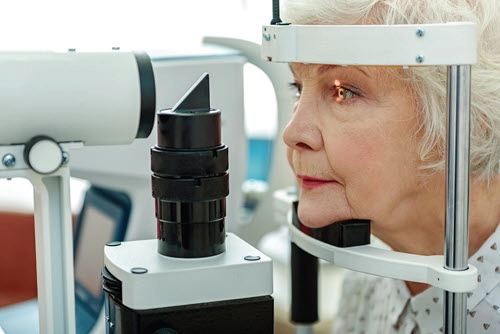Ophthalmology and Optometry Coding Alert
Pandemic Brings Optometrist’s Fraudulent Practices to Light
Avoid his fate by catching coding and billing inaccuracies as soon as you see them. Many medical practices had to change their processes during the COVID-19 public health emergency (PHE), and that process change had both its positives and negatives. But what one optometrist may not have foreseen was the effect those changes would have on the government’s scrutiny of his billing practices. The Massachusetts-based optometrist was indicted by a grand jury in January for making false claims to Medicaid. The state attorney general alleges that the physician billed Medicaid for services administered to nursing home residents in 2020. However, the nursing homes were keeping tight records at that time due to the pandemic, tracking the names of everyone who entered the facilities. When the doctor’s name was not found on nursing home records, more investigations followed, and the doctor was accused of billing MassHealth for over $35,000 of services that weren’t actually performed, including some services that were said to be administered to patients who were actually deceased on the date of service. Check Necessity for Every Procedure The optometrist in question was said to have performed and billed for services that may not have been rendered. A qualified coder should be able to spot services that weren’t actually performed, or encounter notes that don’t appear to be original and unique. Every progress note should show medical necessity for the service, and it may be challenging to find medical necessity in a report for a service that wasn’t actually performed. These would be red flags that something is amiss. It’s the physician’s responsibility to ensure that all medical records contain proof of medical necessity and details about the patient’s encounter. But as a member of the coding staff, you can look for these details and raise flags if you don’t see them in the documentation. One way to catch any coding or billing misdeeds up front is to perform self-audits. During these internal reviews of chart records, watch for anything that looks unusual, including missing documentation, cloned notes, incorrect coding, inappropriate use of codes or modifiers, upcoding, downcoding, failure to document time spent, and many other issues. Check out the following tips to ensure you know how to perform a self-audit that will help you uncover issues your practice may encounter. Get to Know the Basics of Self-Audits What it means: When you perform a self-audit, you’re comparing your providers’ billing records, claims, and medical records to verify expected treatment outcomes and medical necessity of services. In addition, you’ll look for appropriate documentation to support fees and reasonable charges for services your eye care providers rendered. Why you audit: When you audit your physicians’ services, you can uncover incorrect coding patterns or compliance issues. The plus here is that you’ll discover any problems before an outside auditor (such as one from the Office of Inspector General [OIG] or a private insurer) does. What steps you should take: If your practice has a compliance manual or a policy and procedure manual, it may include a written policy that documents exactly how your audit should flow. If not, you should develop such a policy and add it to your manual. If you’re still developing your audit procedure guide, the following tips should help you plan your first self-audit: 1. Decide Which Staff Members to Involve You should involve every member of your practice in your audit. In particular, you’ll want to hold a staff meeting before the audit to explain what you’re doing and why, and to remind staff members that you’re not trying to get anyone in trouble. Instead, you’re hoping to help them figure out what they’re doing right and determine what they should work to improve that will help the practice ethically bring in more reimbursement and decrease denials. Following the audit, you should hold another staff meeting so you can share your results with the rest of the staff members. You can educate the physicians about the relationship between clear documentation and accurate coding; you can help the receptionist understand that when they make an appointment, they should get the insurance information; you can explain to the nurses about collecting appropriate medical histories; and so on. 2. Determine How Many Records You Should Audit If your practice has never performed an audit, you should consider the following factors so you can determine how many records to audit: 3. Prospective or Retrospective Audit? During your pre-audit staff meeting, decide as a group whether you should perform the audit prospectively or retrospectively. Here’s the difference: During a prospective audit, you compare patient documentation with the codes your practice plans to report to insurers but hasn’t yet reported. Essentially, you’re making sure your practice is about to send in a clean claim. For a retrospective audit, you review paid claims to determine whether the codes you submitted matched what the physician documented, and you examine the explanation of benefits (EOB) to determine what the insurer paid you for the service. Many practices perform prospective audits because they can correct the claims before they file. Therefore, they won’t have to refund payers or file appeals for wrongly coded claims, which can happen with a retrospective audit. The advantage to retrospective audits is that you can clearly show your physicians what they documented versus what they coded, and explain how much money they left on the table by leaving out important documentation. Show them the EOB that demonstrates what you collected for their service, and tell them what they could have collected if they had documented more thoroughly and precisely. Keep in mind, however, that not all audit observations are based on documentation, says Mary Pat Johnson, COMT, CPC, COE CPMA, senior consultant with Corcoran Consulting Group. “The internal audit may uncover issues with medical necessity not being documented; exams billed an inappropriate level — too high or too low; medical necessity of services not clearly noted; modifier issues; errors with the place of service; claims billed under the wrong provider; failure to follow bundling edits when billing multiple procedures; or other issues.” 4. Determine Your Audit Focus Most eye care practices audit a mix of ophthalmological services, evaluation and management (E/M) visits, and procedure notes, but you may prefer to audit only one of these at a time. And some practices prefer to perform other types of audits, as follows: These are just some of the common areas targeted by an audit. Upcoding refers to the practice of coding and billing a service that is worth more money, when the eye care provider actually provided or documented a lesser service. Downcoding is when you code and bill for a service that is worth less than what the doctor actually rendered and/or documented. Many providers think that downcoding is a safe practice that allows them to “stay under the radar” of a government audit. According to the OIG and CMS, however, both upcoding and downcoding are considered prosecutable forms of fraud. 5. Select a Person to Perform the Audit Although many practices designate a compliance manager, coder, office manager, or biller to conduct their audit, you may find that a mix of personnel or an outsider should perform the audit, depending on your practice’s preferences. In addition, you should decide who the auditor will report to. Designate one person as the central contact to collect the audit materials. Resource: To read about the case of the optometrist accused of fraud, visit Resource: To read about the case of the optometrist accused of fraud, visit https://www.mass.gov/news/optometrist-charged-with-fraudulently-billing-masshealth-for-care-never-provided-to-nursing-home-residents.

Related Articles
Ophthalmology and Optometry Coding Alert
- Retinopathy Coding:
Quiz: Can You Code Laser Treatments Related to Diabetic Retinopathy?
Keeping track of all the variables involved can be challenging. According to the Centers for [...] - Compliance:
Pandemic Brings Optometrist’s Fraudulent Practices to Light
Avoid his fate by catching coding and billing inaccuracies as soon as you see them. [...] - Part B Coding:
From Modifiers to Appeals, Check This 2022 Coding Advice, Straight From Part B Reps
Remember those appeal timelines. From reporting split/shared services to moving forward with another year of [...] - You Be the Coder:
Can You Pick the Right Botox Code?
Question: How would I report a Botox injection to control blepharospasm in only one eye? California [...] - Reader Questions:
Low-Risk Glaucoma Screenings May Warrant ABN
Question: Our office sometimes performs glaucoma screenings for patients who don’t meet Medicare’s definition of “high [...]




